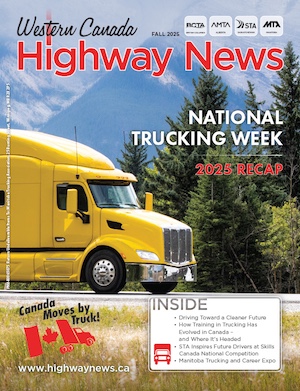Katie Woychyshyn
If you are reading this article, the driver shortage is most likely not new to you. In fact, you may already know that the estimated driver supply and demand gap for 2024 is 34,000 drivers, and estimated to increase, according to The Truck Driver Supply and Demand Gap, published in 2016 by the CPCS. Drivers are aging out and new drivers are not aging in.
“There have been reports of carriers having to turn away business because of a lack of drivers.” Chris Nash, President of the Alberta Motor Transportation Association (AMTA) says, “There is a general inability to keep up with demand.”
Though a cure-all solution has evaded the industry, numbers show that immigration may be one of the solutions to the urgent need for drivers. Statistics Canada’s 2018 Annual Demographic Estimates report states that approximately 303,000 immigrants entered Canada in the 2017 to 2018 year.
Yet, employers are running into problems when attracting this new demographic. Driving is considered to be an unskilled occupation, according to the National Occupational Classification (NOC), which is yet another of hurdle on the list of challenges when it comes to hiring foreign employees.
The NOC system is used to classify jobs based on job requirements and duties. These classifications are broken into Skill Type 0, A, B, C, or D. Immigration programs use the classifications to decide if a job or type of work experience meets immigration eligibility. According to NOC and the Government of Canada, only Skill Types 0, A, and B are considered to be ‘skilled’ positions.
The problem is that fields like long haul trucking are considered ‘unskilled’ when not just anyone can drive a truck, especially across great distances, according to Terry Shaw, President of the Manitoba Trucking Association (MTA). This leaves the trucking industry in the dust.
“I dare anyone to jump in a truck, fire it up, and drive to Calgary,”
Shaw says. According to www.canadianvisa.org, an unskilled worker’s best options are “to apply for a stream under the Provincial Nominee Program because Express Entry works with the Federal Skilled Worker Program, Federal Trades Program and the Canadian Experience Class which all require some form of a qualification.”
Author Megon Venter adds, to be a truck driver in Saskatchewan, applicants “need to have a Class 1A driver’s license, have an offer of full-time employment from an approved trucking firm and have been working in Saskatchewan for six months.”
This does not take MELT requirements into consideration, which adds cost and time to the process.
Employers may also find awareness and stigma to be barriers when hiring, says Scott Rea, President of US trucking consultation company AvatarFleet, “There is still somewhat of an ‘old-school knights of the road’ mentality, when it comes to the Industry,” he notes.
In reality, drivers are a diverse set of people with varying backgrounds. According to an article in Today’s Trucking, research done by Newcom Media presents that 44,490 of Canada’s drivers are visible minorities, the majority from South Asia. They also found that 15% of those drivers speak Punjabi, a language originated from the Punjab region of Pakistan and India. The demographic has been so vast that Canadian publications, such as Road Today, have served the niche by having articles in a mix of Punjabi/Hindi/English.
Even so, there’s a long way to go to fill the 34,000 empty truck seats. The AMTA, the Saskatchewan Trucking Association (STA), andthe MTA are all working to raise awareness among youth in the field, encourage applicants, and to reach more diverse groups.
Andrew Barnes, AMTA Director of Compliance and Regulatory Affairs, has been working with Trucking HR, and the Canadian Trucking Alliance encourage people to immigrate to drive. “This effort started with talking to International Recruiters and getting them to refer people with the correct skills,” he says.
The MTA is currently working to launch a public relations campaign to bring more awareness to the industry as a viable career option for both immigrants and young Canadians. This PR campaign is intended to highlight trucking as a career, but also different roles in the industry – from Technicians to HR. The campaign was finalised last year, but has faced delays, Shaw says. It is anticipated for release in the next year.


 1-866-985-9791
1-866-985-9791



